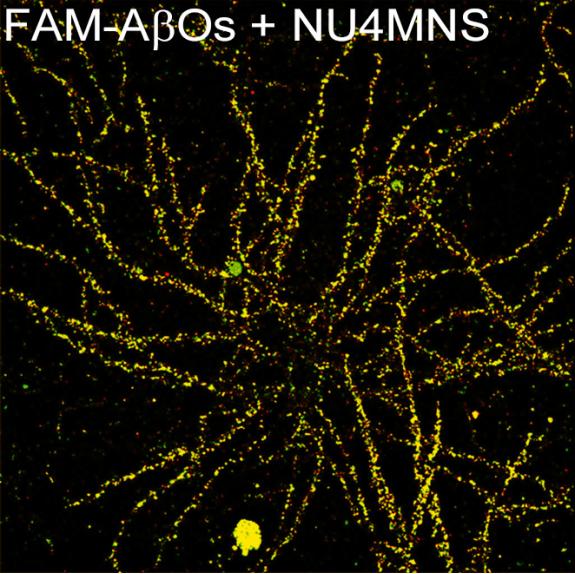NEW MRI PROBE DETECTS ALZHEIMER’S DISEASE AT EARLIEST STAGE YET
Alzheimer’s Disease is a chronic neurodegenerative illness, that accounts for approximately 60-70% of dementia cases. Although there are several hypotheses that attempt to explain the underlying cause (pathophysiology) of Alzheimer’s Disease, one of the most promising is the Amyloid Hypothesis. Specifically, the beta-amyloid protein is believed to be responsible for neuronal damage. However, when beta-amyloid plaques are discovered, it could be too late to offer the patient a better prognosis. This is why a team of scientists from Northwestern University have designed a MRI probe that can not only detect, but can bind the toxins and prevent them from doing damage.The special MRI probe combines a magnetic nanostructure (MNS) and an antibody capable of sniffing out amyloid beta brain toxins responsible for the disease, which show up as dark areas on MRI scans.

Earliest signs of disease onset.
Unlike previous diagnostic tools, this one can differentiate individual amyloid beta oligomers instead of plaques, which when discovered cannot be treated adequately. These oligomers attach to the synapses of neurons and subsequently form plaques, which are thought to be responsible for memory loss and dementia. These oligomers are believed to form decades before the clinical manifestation of disease, so the ability to “nip them in the bud” will be invaluable in preventing the onset of the disease.The team of researchers from Northwestern experimented with mice with an Alzheimer disease model and a control group. They discovered the clear presence of dark areas in the hippocampus, indicative of early toxin activity.
New treatment
Preliminary data shows that a single use of the MRI probe improved the condition of animals with Alzheimer’s. The probe has also been tested on human cadavers with Alzheimer’s where dark areas of amyloid beta oligomers in the afflicted brains were visible. Battling this crippling disease will become easier with the advancement of technology and diagnostic capabilities. Although currently there are no effective drugs to treat Alzheimer’s, when they are developed, this new technology can be used to monitor changes on the molecular level.
13.01.2015